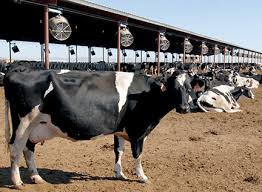Upsurge in Zimbabwe milk production
ZIMBABWE continues to increase its milk production levels with the Zimbabwe Association of Dairy Farmers assuring the market of improved supplies and completely reversing any shortages of the commodity in the short to medium term.
Riding on enhanced support from Government policies and deliberate strategies to revamp the agriculture value chain on the main, dairy farmers have increased output to 91 million litres in 2022, up from 79, 9 million litres recorded in the previous year.
World Milk Day
This, according to market analysts and farmers, is a commendable all-time-high milestone as the dairy sector has gradually pulled out from years of underperformance.
Although the increase in production is commendable, it still falls short of the country’s target of reaching 120 million litres of milk annually.
The growing success story is being achieved under the Dairy Sector Strategy Investment Plan and the Agricultural Food Systems Transformation Strategy. Moreover, dairy farmers are benefitting largely from assistance created through multiple business partnerships that include the Ministry of Lands, Agriculture, Fisheries, Water and Rural Resettlement, processors, and the European Union (EU)-funded projects.
Zimbabwe Association of Dairy Farmers regional chairperson, Mr Alex Dando, said farmers are working hand in hand with the Ministry of Lands, Agriculture, Fisheries, Water and Rural Settlement to make sure the country achieves milk sufficiency at household level.
Mr Dando said this at the occasion of this year’s celebration of World Milk Day in Bulawayo yesterday.
He noted, in particular, that dairy farmers look up to support from all Government policies that are geared at uplifting the sector and the economy as a whole.
This year’s Milk Day commemorations discussions were focused on how the dairy industry is reducing its harmful effects on the environment.
“Despite some persistent challenges, dairy farmers in the country continue to be motivated and inspired to increase milk production through the support from Government programmes, private sector and development partners’ intervention,” said Mr Dando.
“Milk is the top agricultural commodity in value terms worldwide as it accounts for about 14 percent of the global agricultural trade.”
In Zimbabwe, dairy production and development support has seen the sector contributing well to the achievement of Sustainable Development Goal number 2, which seeks to end world hunger, achieve food security and improve nutrition and promote sustainable agriculture in line with Government’s Vision 2030, which targets to achieve an empowered and prosperous upper middle-income society.
In Matabeleland region, dairy production is immensely contributing to the national vision and is in line with Government’s key economic development blueprints.
Mr Dando said there has been a noticeable increase in dairy production by smallholder dairy farmers, which was highly commendable.
“Increases in agricultural production and productivity especially by smallholder farmers will ensure food and nutritional security, enhanced income, increased opportunities for value addition, and the development of agro-business value chain,” he said.
Bulawayo Provincial Affairs and Devolution Minister Judith Ncube, in a speech read on her behalf by Mrs Gladys Zizhou, said the Government was devoted to make sure that dairy farmers get all the support they need to help the country achieve a sustainable food and nutritional status.
Mr Mupotsa
“This year’s theme is anchored on ensuring sustainable economic practices that help preserve our environment for future generations, while also providing nutritious foods and livelihoods.
“On behalf of the Government, I would like to state that we are committed to the sustenance of the dairy sector so that it generates maximum benefits for the country,” said Minister Ncube.
Over the past four years, the number of farmers in the dairy farming enterprise has increased and so were the milk volumes, which averaged 60 million litres per annum, according to the Agriculture Sector Survey on dairy farming.
ebusinessweekly











